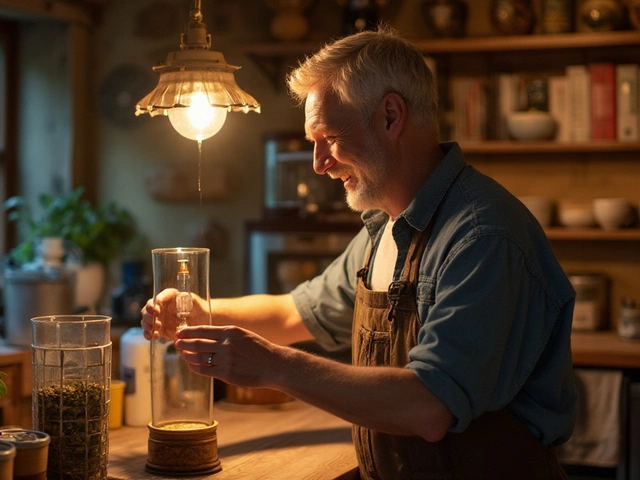How Tea Production Works: From Leaf to Cup
Ever wonder how that fragrant brew lands in your mug? It all starts with a plant, but the journey is full of decisions that shape taste, aroma, and price. Below we walk through each stage of tea production, so you can see why a good cup is more than just hot water and a bag.
1. Harvesting the Leaves
The first step is picking. Tea growers usually harvest the top two leaves and a bud – called the "two-and-a-bud" – because those parts hold the most flavor. Some estates use hand‑picking for precision, while larger farms may rely on mechanical harvesters to cut costs. Timing matters: a leaf plucked too early is bitter, too late and it loses freshness. That’s why premium teas often list the exact harvest season on the label.
2. Withering and Rolling
Once harvested, the leaves are spread out to wither. This reduces moisture and makes the leaves pliable. Withering can take a few hours in cool, breezy rooms or it can be a quick, controlled process using fans. After withering, the leaves are rolled or twisted. Rolling breaks cell walls, releasing enzymes that start oxidation – the chemical reaction that creates the flavor profile of black, oolong, or green tea. Green tea skips the oxidation step, so it’s rolled then quickly heated to lock in the fresh, grassy notes.
Next comes oxidation, often called “fermentation” (though no microbes are involved). For black tea, the leaves sit for 30‑90 minutes, turning dark and developing rich, bold flavors. Oolong tea is stopped halfway, giving it a balance between green and black characteristics. The length and temperature of oxidation are carefully monitored – a small change can shift the final taste dramatically.
After oxidation, the leaves are heated again to stop the reaction. This can be done by pan‑firing, steaming, or using hot air ovens. The method influences the tea’s final texture: steaming keeps a smoother feel, while pan‑firing adds a toasty edge.
3. Drying and Sorting
Drying removes the remaining moisture, making the tea shelf‑stable. The leaves are usually dried at low heat until they reach about 3‑5% moisture. Over‑drying makes the tea brittle; under‑drying leads to spoilage. Once dry, the tea is sorted by size and grade. High‑grade teas often consist of whole leaves or fine buds, while lower grades may contain broken pieces and fannings.
Packaging happens right after sorting. Modern factories use airtight pouches with nitrogen flushes to keep oxygen out, preserving flavor longer. Some artisanal producers still use traditional tin boxes or paper wrappers, which can add a nostalgic touch but may let the tea age faster.
4. Quality Checks and Sustainability
Before the tea hits store shelves, it undergoes quality checks. Lab tests verify caffeine levels, contaminants, and moisture content. Sensory panels also taste the tea to ensure it matches the expected profile. Sustainable farms often label their tea with certifications like Fair Trade or Organic, which indicate responsible farming practices.
Understanding these steps helps you pick teas that fit your taste and values. If a bag lists "hand‑picked, sun‑withered, lightly oxidized," you know the producer took extra care at each stage. Next time you brew a cup, you’ll appreciate the many hands and hours that turned a simple leaf into that comforting sip.
So, the next time you sip, think about the journey: the careful harvest, the gentle withering, the precise oxidation, and the final drying. Each step is a chance to shape flavor, and knowing the process makes every cup a little more interesting.
Explore which country stands as the leading producer of tea, offering insights into its cultivation and unique varieties. Discover intriguing facts about tea production and practical tips for tea enthusiasts, providing a fresh perspective on the global tea industry. From the vast plantations to the harvesting techniques, understand why this country leads in both quantity and quality.
View Details

